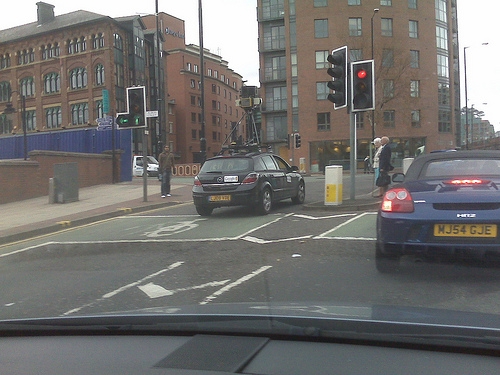
People who have lost sight in an eye can generally perform most tasks that someone with full eyesight can, even driving and piloting. Driving with blindness in one eye may include some relatively minor inconveniences and require more diligence. The biggest hurdles come from proving to the government and sometimes the driver himself that he is able to handle a car.
Although driving restrictions for the visually impaired vary from state to state, most states will allow people to drive so long as they have at least one functioning eye---called monocular vision. Certain rules may apply, such as not being able to drive at night, reports LostEye.com. Usually, losing sight in an eye does not significantly impair the ability to drive a car.
While a person may still feel that she can still drive safely with sight in only one eye, anybody that develops a visual impairment before having to renew their drivers license should contact their local motor-vehicle department to get their eyesight and driving ability reevaluated, reports Mark E. Wilkinson, Director of University of Iowa's Vision Rehabilitation Service. In some states, such as Iowa and Missouri, drivers are legally required to take this reevaluation.
Losing eyesight in an eye requires tweaking driving habits and taking more caution on the road, reports LostEye. The nose becomes a new blind spot that the functioning eye takes a few days to get used to. While driving, the driver must completely turn his head instead of depending on peripheral vision to check for cars and obstacles in other lanes.
First time drivers who are blind in one eye may find it difficult to get a drivers license, or current drivers may want to remove restrictions on their license, reports Wilkinson. Drivers can often receive written confirmation from their optometrist stating the individual's visual disability does not impair his ability to operate an automobile.
People with monocular vision often report that the biggest hurdle to driving on one eye are the psychological factors; believing that losing sight in one eye means the individual has less mobility than they had with two eyes, reports LostEye. For the first few times driving with monocular vision, the driver may want to have a trusted companion point out blind spots and distances for reassurance.